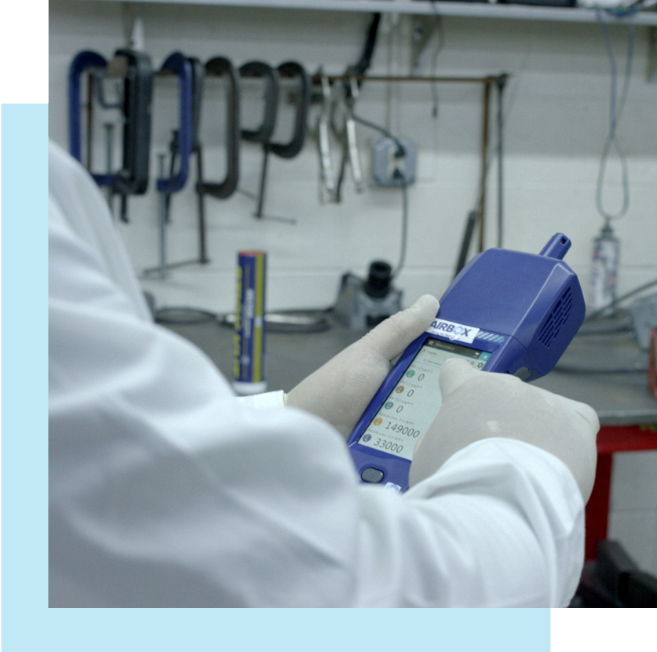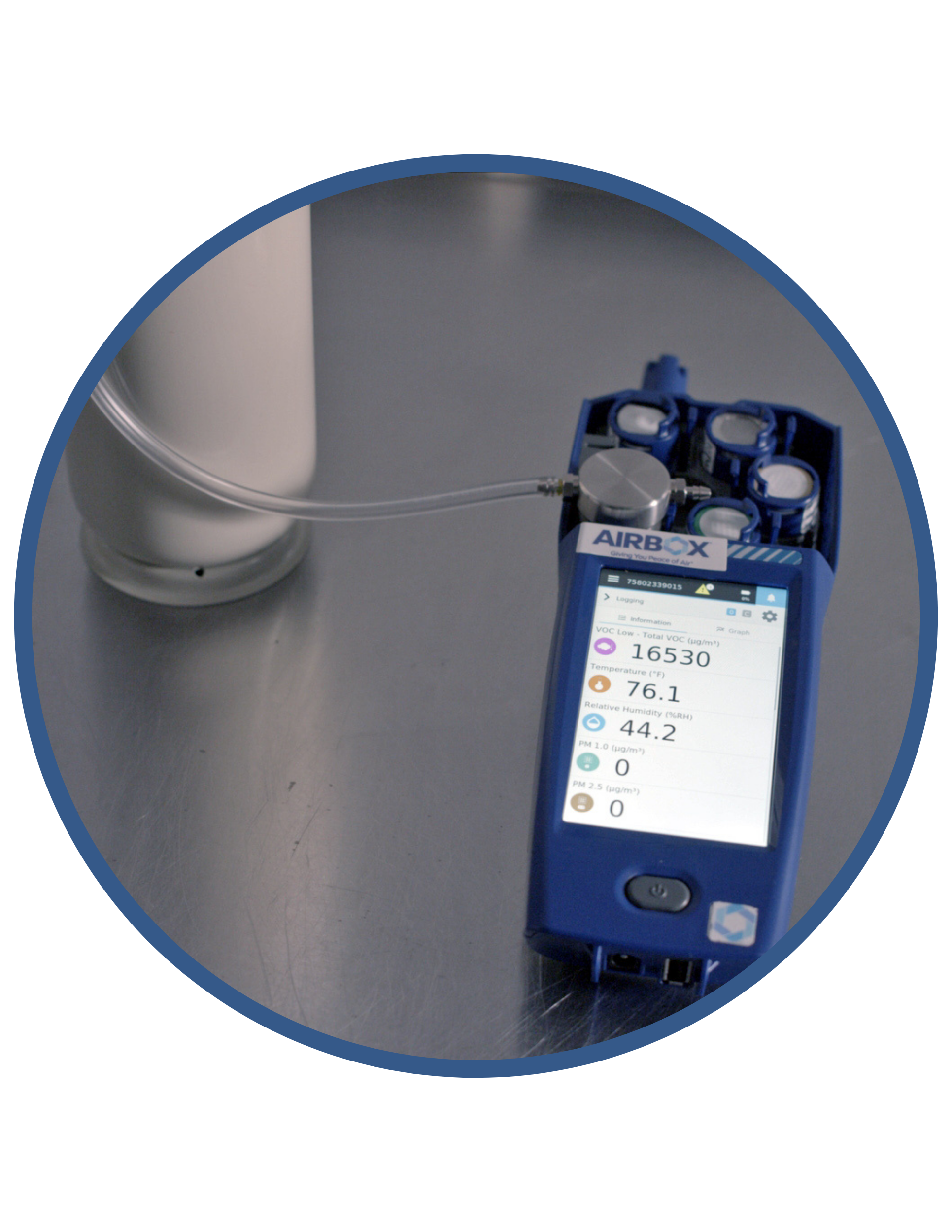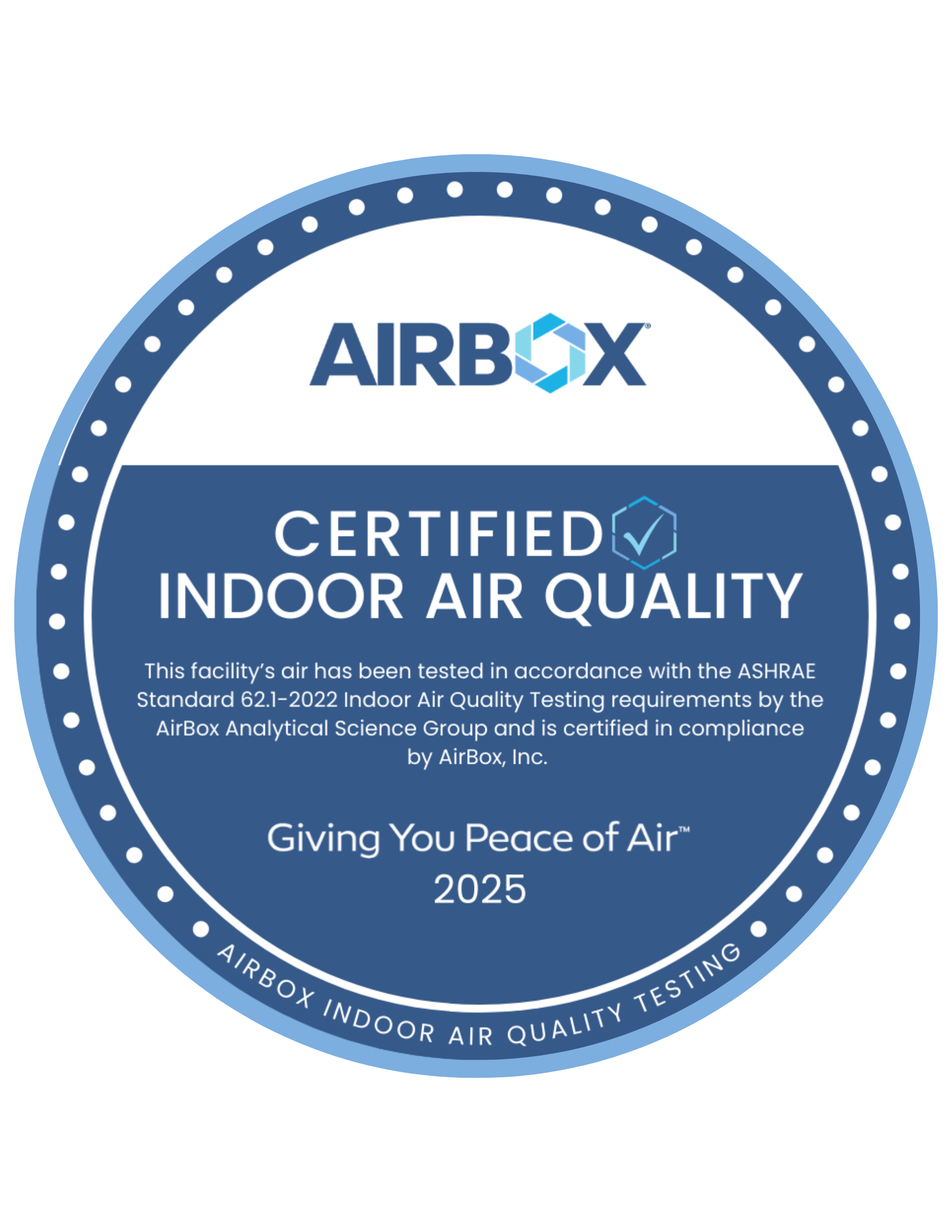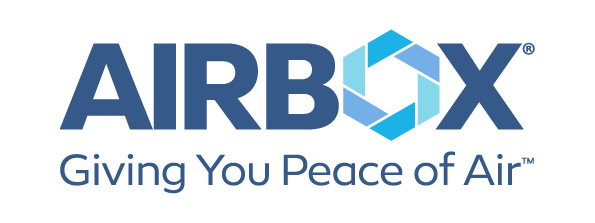AirBox Indoor Air Quality Testing
Find out what’s in your air.
What is AirBox Indoor Air Quality Testing?
The objective of the AirBox Indoor Air Quality Testing is to conduct a thorough examination of indoor air quality within client facilities, with a primary focus on identifying key contaminants of concern (COCs). These studies are rooted in the latest scientific research pertaining to contaminants typically found in industrial or commercial settings.
To ensure the accuracy and relevance of our findings, our Analytical Science Group adheres to the most up-to-date guidelines and requirements provided by ASHRAE Standards. These standards are widely acknowledged for their stringent criteria for maintaining optimal indoor environmental quality.

The AirBox strategy involves utilizing technicians equipped with advanced portable sensors to detect a wide range of indoor air contaminants with high precision. This technology allows for real-time monitoring and analysis, offering detailed insights into the types and concentrations of contaminants present.
Additionally, we enhance our on-site sensor data with comprehensive laboratory measurements. Our analyses will provide a deeper understanding of the identified contaminants, giving a more nuanced perspective on indoor air quality in various environments. By combining cutting-edge sensor technology with detailed third-party laboratory analysis, AirBox ensures an accurate indoor air quality test in commercial spaces.
What contaminants are included in the AirBox IAQ testing?
List of Contaminant of Concerns/Indicators
| Design Compound or PM2.5 | Acceptable IAQ | Reference |
| Carbon monoxide | 9 ppm | ASHRAE Standard 62.1-2022 |
| PM2.5 | 12 µg/m3 | ASHRAE Standard 62.1-2022 |
| Ozone | 70 ppb | ASHRAE Standard 62.1-2022 |
| Ammonia | 200 µg/m3 | ASHRAE Standard 62.1-2022 |
| Acetaldehyde | 140 µg/m3 | ASHRAE Standard 62.1-2022 |
| Acetone | 1200 µg/m3 | ASHRAE Standard 62.1-2022 |
| Benzene | 3 µg/m3 | ASHRAE Standard 62.1-2022 |
| Dichloromethane | 400 µg/m3 | ASHRAE Standard 62.1-2022 |
| Formaldehyde | 33 µg/m3 | ASHRAE Standard 62.1-2022 |
| Naphthalene | 9 µg/m3 | ASHRAE Standard 62.1-2022 |
| Phenol | 70 µg/m3 | ASHRAE Standard 62.1-2022 |
| Tetrachloroethylene | 35 µg/m3 | ASHRAE Standard 62.1-2022 |
| Toluene | 300 µg/m3 | ASHRAE Standard 62.1-2022 |
| Xylene, total | 500 µg/m3 | ASHRAE Standard 62.1-2022 |
IAQ Testing in
4 simple steps
Our data-driven Indoor Air Quality Testing services takes the guesswork out of what’s going on with your air.
It tells you exactly what contaminants are in your indoor air and their concentrations. These steps will lead you
from guessing to knowing—and from dirty, unhealthy air to clean.

STEP 1
Floor plan submittal and proposal
You need an accurate picture of indoor air contaminants. That’s why the AirBox IAQ Testing process has you submit a floor plan first. Our Analytical Science Group will then recommend the best sampling points in the facility.

STEP 2
Analytical Science Group testing
AirBox analytical technicians, led by our LEED accredited Environmental Scientist, will provide quantitative testing of particulate and gaseous contaminants. We use highly calibrated sensors and air sampling diagnostic equipment to provide the most accurate results.

STEP 3
Lab analyses and data reporting
We combine data from our cutting-edge sensor technology with in-depth lab analysis performed by an accredited third-party lab to ensure a comprehensive, accurate test of indoor air quality. This points the way for effective strategies to mitigate the identified contaminants.

STEP 4
Improved indoor air solutions
The results of the IAQ testing are then reviewed by our Analytical Science Group and Engineering Group to provide science-backed strategies to effectively improve the indoor air quality of your facility.
Who is the AirBox Analytical Science Group?
The AirBox Analytical Science Group is a dedicated team of indoor air quality experts specializing in the science behind effective air purification and responsible for developing and executing the rigorous testing protocols that set AirBox apart. Combining deep knowledge of ASHRAE standards, contaminant behavior, and real-world testing methodologies, this group ensures every AirBox solution is backed by verified performance data. By combining scientific expertise with real-world application, the group provides the data-driven foundation that drives compliance and delivers healthier, safer, and more efficient indoor environments.
What type of IAQ Testing best fits your needs?

AirBox Indoor Air Quality Assessment Testing
The AirBox Indoor Air Quality Assessment Testing is performed when facility managers suspect indoor air quality contaminants are present or are required to meet state legislative requirements. Our AirBox Assessment Testing identifies and measures contaminants of concern and provides mitigation strategies for facilities.

AirBox Indoor Air Quality Verification Testing
The AirBox Indoor Air Quality Verification Testing is performed post-implementation of the Indoor Air Quality Procedure (IAQP) to verify system contaminant removal efficiency. Our testing adheres strictly to ASHRAE Standard 62.1-2022 Indoor Air Quality Verification requirements to provide final compliance.

AirBox Indoor Air Quality Certification Testing
The AirBox Indoor Air Quality Certification Testing is performed to certify a facility’s indoor air quality. This is useful to mitigate the risk of receiving indoor air quality complaints and litigation, as well as increase company value with a proven safe working environment.
AirBox IAQ Testing Credentials
AirBox brings technical expertise and third-party recognition to every Indoor Air Quality Test. Our team operates under rigorous industry standards, validated methodologies, and nationally recognized certifications that ensure every assessment is accurate, defensible, and ready for compliance documentation.
- EPA Method TO-17
- AIHA LAP, LLC accreditation to ISO/IEC 17025:2017 international standard
- General Requirements for the Competence of Testing and Calibration Laboratories: Industrial Hygiene
- General Requirements for the Competence of Testing and Calibration Laboratories: Unique Scopes
- General Requirements for the Competence of Testing and Calibration Laboratories: Environmental Microbiology
- ISO 16000-6:2011 Indoor Air- Part 6
- ISO 17025:2017 Accredited Laboratory (NVLAP Code 200661-0)
- Direct Read Instrumentation Calibration system is registered to ISO-9001:2015
- European DIN Standard EN-717
- ASTM methods D-5582 and E-1333
- NIOSH 2549
- CARB § 93120
- Environmental Microbiology Laboratory Accreditation Program (EMLAP)
- Accuracies traceable to NIST
Request your AirBox Indoor Air Quality Testing
Welcome to the era of clean air
AirBox is America’s top manufacturer of commercial-grade air
purification systems, proven to eliminate over 99.99% of harmful
airborne particles and pathogens in indoor environments.

